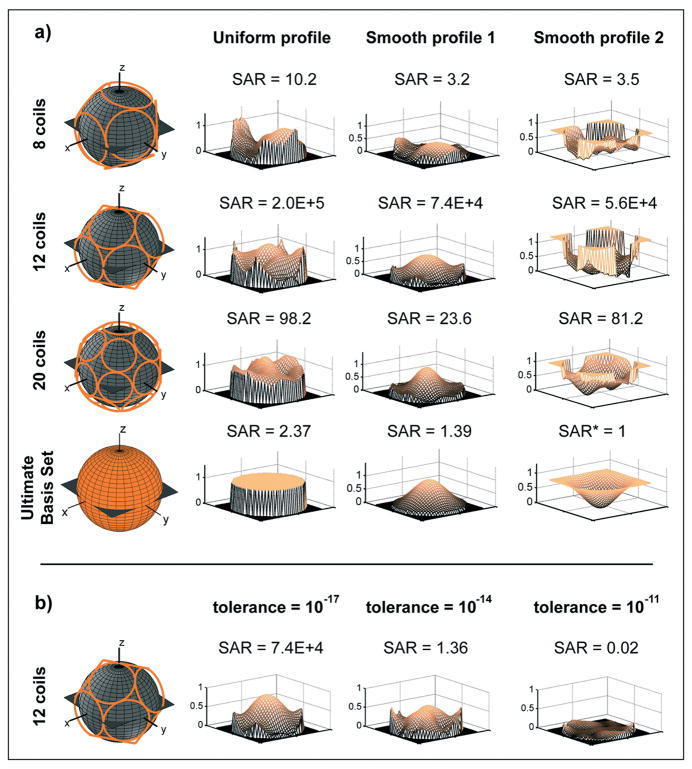Figure 6.
SAR benefits of relaxing homogeneity constraints. a) Average global SAR and actual excited profile using RF shimming for various transmit coils configurations at 7T magnetic field strength. The case of uniform concentric profiles considered elsewhere in this work is compared against two smoother target excitation profiles: a bi-dimensional Gaussian curve of amplitude one in the center of the FOV and a bi-dimensional quadratic function with amplitude decreasing from one at the edges to zero in the center. b) Average global SAR and actual excited profile using RF shimming for varying degrees of regularization with a 12-element transmit array at 7T. By increasing the tolerance of the SVD-based inversion in Eq. 23, we can loosen the constraint on profile fidelity in order to improve SAR. SVD tolerance (i.e. the threshold for the smallest singular value considered nonzero and included in the inversion) increases from 10−17 to 10−14 to 10−11 from left to right, and the resulting SAR values for RF shimming are shown above the resulting excited profiles. The radius of the modeled homogeneous sphere is 15 cm for both (a) and (b). The quantities reported are relative measures of SAR and are normalized to the case with the lowest SAR value in (a), which is indicated with an asterisk in the figure.

